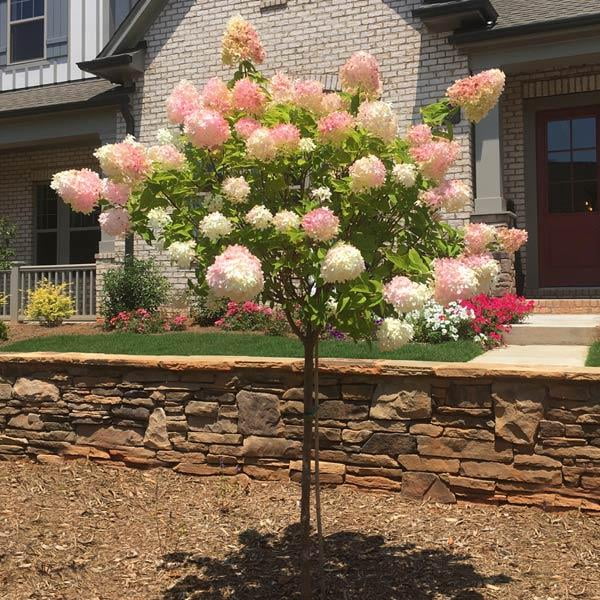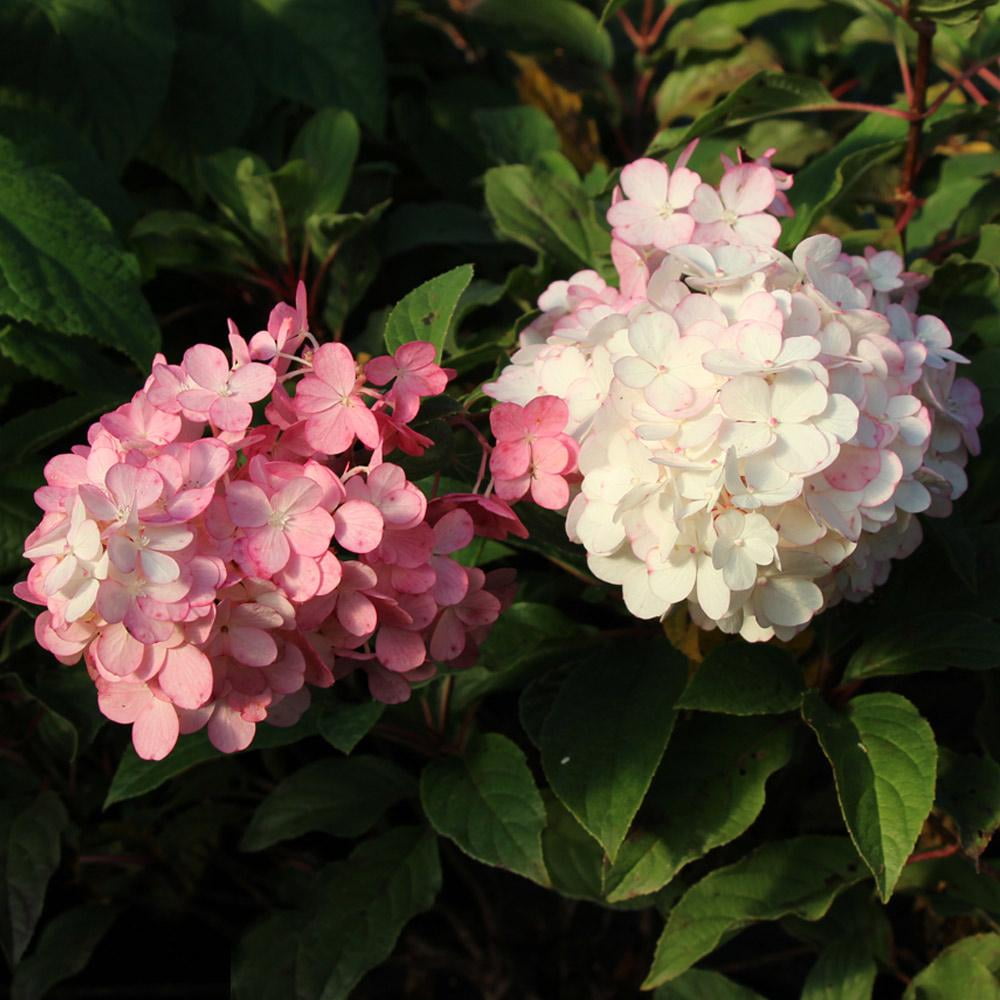The Strawberry Cream Hydrangea: A Sweet And Delightful Addition To Your Garden
The Strawberry Cream Hydrangea is a beautiful and versatile shrub that can add a touch of sweetness to any garden. It is known for its large, fluffy blooms that start out a creamy white color and gradually fade to a light pink or peach as they mature. The flowers are borne on long, sturdy stems that rise above the foliage, making them perfect for cutting and arranging in bouquets.
Strawberry Cream Hydrangeas are relatively easy to care for and can thrive in a variety of conditions. They prefer full sun to partial shade and well-drained soil. They are also relatively drought tolerant once established.
To ensure that your Strawberry Cream Hydrangea blooms profusely, it is important to fertilize it regularly. A balanced fertilizer, such as 10-10-10, can be applied in the spring and fall. You should also water your hydrangea regularly, especially during hot, dry weather.
If you live in a cold climate, you may need to protect your Strawberry Cream Hydrangea from frost. The best way to do this is to mulch around the plant with a thick layer of organic matter, such as straw or leaves. You may also need to cover the plant with a burlap sack or other protective material.
With proper care, your Strawberry Cream Hydrangea will reward you with years of beautiful blooms. It is a truly delightful addition to any garden.
Main Content
- Planting and Care
Strawberry Cream Hydrangeas are relatively easy to care for, but there are a few things you need to keep in mind when planting and caring for them.
Choose a location that receives full sun to partial shade.
The soil should be well-drained.
Amend the soil with compost or other organic matter before planting.
Water the plant regularly, especially during the first year after planting.
Fertilize the plant in the spring and fall with a balanced fertilizer.
Protect the plant from frost in cold climates.
Pruning
Strawberry Cream Hydrangeas do not require a lot of pruning. However, you may want to prune them in the spring to remove any dead or damaged branches. You can also prune them to shape the plant or to control its size.
- Propagation
Strawberry Cream Hydrangeas can be propagated by cuttings. To take cuttings, choose a healthy branch that is about 6 inches long. Remove the leaves from the bottom half of the cutting and dip the end in rooting hormone. Plant the cutting in a pot of well-drained soil and keep the soil moist. The cutting should root in about 4-6 weeks.
- Problems
Strawberry Cream Hydrangeas are generally resistant to pests and diseases. However, they may be susceptible to leaf spot, powdery mildew, and aphids. If you notice any problems with your plant, you can treat them with an appropriate pesticide or fungicide.
Conclusion
The Strawberry Cream Hydrangea is a beautiful and versatile shrub that can add a touch of sweetness to any garden. It is relatively easy to care for and can thrive in a variety of conditions. With proper care, your Strawberry Cream Hydrangea will reward you with years of beautiful blooms.
If you're looking for a hydrangea with blooms that are as sweet as they are beautiful, look no further than the strawberry cream hydrangea. This stunning shrub produces large, cone-shaped clusters of flowers that start out a pale green in the spring, then gradually fade to a delicate shade of strawberry cream as they mature. The flowers are also fragrant, with a sweet, fruity scent that will fill your garden with a delightful aroma.
If you're interested in learning more about strawberry cream hydrangeas, I recommend visiting . This website has a wealth of information about this popular shrub, including care tips, planting instructions, and even recipes for using the flowers in culinary dishes.
FAQ of strawberry cream hydrangea
- What are the care requirements for strawberry cream hydrangea?
Strawberry cream hydrangea is a relatively low-maintenance plant, but it does require some basic care to thrive. Here are a few tips:
* Plant it in a location that receives full sun to partial shade.
* Water it deeply once a week, or more often during hot, dry weather.
* Fertilize it once in the spring with a balanced fertilizer.
* Prune it in the late winter or early spring, removing any dead or damaged stems.
- Why is my strawberry cream hydrangea not turning pink?
The color of strawberry cream hydrangea flowers is affected by the pH of the soil. In acidic soils, the flowers will be more pink, while in alkaline soils, they will be more blue. If you want your hydrangeas to turn pink, you can adjust the pH of the soil by adding sulfur or aluminum sulfate.
- How tall do strawberry cream hydrangeas get?
Strawberry cream hydrangeas typically grow to be 6-8 feet tall and 4-5 feet wide. They can be trained to grow as a single-stemmed shrub or as a multi-stemmed shrub.
- Are strawberry cream hydrangeas deer resistant?
Unfortunately, strawberry cream hydrangeas are not deer resistant. Deer are attracted to the tender new growth of hydrangeas, and they will often eat the leaves and flowers. If you have deer in your area, you may need to take steps to protect your hydrangeas, such as fencing them in or using deer repellent.
- Can I propagate strawberry cream hydrangeas?
Yes, strawberry cream hydrangeas can be propagated by several methods, including:
* Stem cuttings: Take 4-6 inch cuttings from healthy, non-flowering stems in the spring or early summer. Remove the lower leaves and dip the cut end in rooting hormone. Plant the cuttings in a well-draining potting mix and keep them moist.
* Air layering: In the spring or early summer, make a small slit in the bark of a healthy stem. Wrap the slit with moist sphagnum moss and secure it with plastic wrap. Keep the moss moist and the stem will eventually develop roots. Once the roots are established, you can cut the rooted stem from the parent plant and plant it in its own container.
* Division: In the spring or fall, dig up a mature strawberry cream hydrangea and divide it into several smaller plants. Each plant should have at least 3-4 healthy roots. Replant the divided plants in their own containers or in the garden.
Image of strawberry cream hydrangea
- Image 1: A large, full bloom of a strawberry cream hydrangea. The flowers are a light pink color with a white center. They are arranged in a large, conical shape.

- Image 2: A close-up of the flowers of a strawberry cream hydrangea. The individual flowers are small and delicate, with a slightly wavy edge. The color is a light pink with a white center.

- Image 3: A row of strawberry cream hydrangeas in bloom. The flowers are a light pink color with a white center. They are arranged in a row along a fence.

- Image 4: A strawberry cream hydrangea in bloom against a blue sky. The flowers are a light pink color with a white center. They are arranged in a large, conical shape.

- Image 5: A strawberry cream hydrangea in bloom in a garden. The flowers are a light pink color with a white center. They are arranged in a large, conical shape. The hydrangea is surrounded by other flowers and plants.

Post a Comment for "The Strawberry Cream Hydrangea: A Sweet And Delightful Addition To Your Garden"